Avant Gardener: Cultivating Innovation in Music
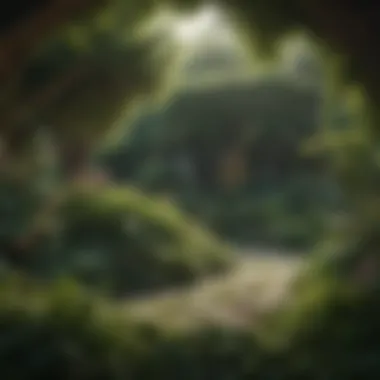
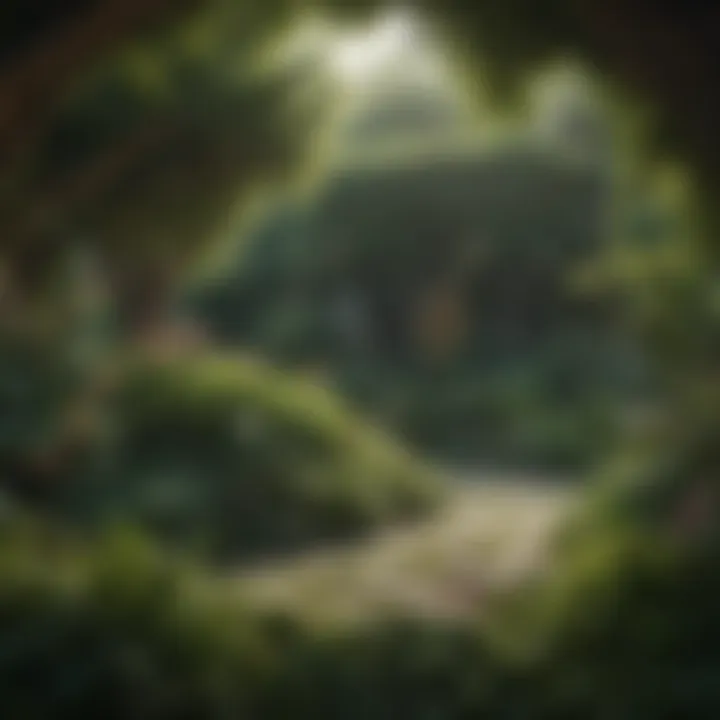
Intro
The relationship between gardening and music may seem esoteric, yet it breeds an intriguing landscape for exploration. The avant gardener is a unique figure—a person who cultivates creativity like plants in a garden. This metaphor extends across disciplines, especially in modern music. Understanding the avant gardener's role helps to frame how musicians innovate and push boundaries by integrating diverse influences. As we delve into this topic, we will analyze how historical contexts and avant-garde movements have shaped music as we know it today.
In this exploration, we will also recognize contemporary artists who embody this concept, and discuss the implications of their works within the larger artistic narrative. The journey invites music enthusiasts to expand their perception of creativity, demonstrating that innovation can arise from unexpected intersections.
Artist Profile
Biography and Background
The avant gardener in music does not necessarily refer to a single individual. Rather, it represents a movement characterized by various artists who challenge traditional norms. One prominent figure is John Cage. Cage's background in both music and philosophy made him a significant proponent of experimentalism. He famously introduced the concept of chance operations, allowing randomness to shape musical composition. This approach resonated with the idea of an avant gardener, cultivating the musical field by sowing seeds of unpredictability.
Major Influences and Inspirations
John Cage was influenced by many sources, including the Zen philosophy and traditional Asian music. His works, such as "4'33"", challenge audiences to reconsider the role of silence and sound in music. Other artists that reflect the avant gardener ethos include David Bowie, whose genre-defying work inspired new definitions of performance and identity. The collaborative spirit of Bowie’s work reveals how influences can intertwine and produce novel forms.
Key influences can be summarized as follows:
- Philosophical Roots: Concepts from Zen and other philosophies that emphasize the beauty of absence and presence.
- Experimental Collaborations: Partnerships with artists across different genres and mediums.
- Cultural Shifts: The impact of social and political movements shaping artistic expression.
Song Analysis
Theme and Lyrics Breakdown
When discussing the avant gardener, it is essential to examine the thematic elements of songs. Consider Cage's approach, wherein lyrics can be not only textual but performative in nature. In the case of Bowie's "Space Oddity," the existential themes raised question humanity's place in the universe. The metaphor of space exploration is akin to the avant gardener's exploration of uncharted creative territory.
The essence of avant-garde influences in lyrics emerges in the fragmentation and deconstruction of traditional forms. This opens a dialogue about how language shapes musical perception.
Instrumentation and Composition
Avant-garde musicians often experiment with unconventional instruments or non-standard techniques. In works like Cage's "Prepared Piano," everyday objects alter sound production, creating new textures. Similarly, the innovative use of synthesizers in modern music has opened pathways for avant gardener influences to surface. Compositions become gardens where different sounds bloom, and the audience is invited to explore the diverse sonic flora.
By analyzing these facets, we enhance our understanding of the avant gardener's vital role in shaping contemporary music. It's not just about the sounds produced but the underlying intentions, societal reflections, and cultural dialogues embedded within the compositions.
"Art is not a thing, it is a way." - Elbert Hubbard
Understanding the Avant Gardener
The term "avant gardener" merges the realms of horticulture and music, illuminating a distinct perspective on innovation. Understanding this concept becomes crucial as it embodies the essence of creativity within modern music. Through a careful exploration of how these ideas intertwine, one can gain insights into the groundbreaking developments transforming the musical landscape.
The avant gardener symbolizes a figure who not only nurtures plants but also cultivates fresh ideas within music. This multifaceted role emphasizes the importance of experimentation and the rejection of conventional boundaries. By drawing parallels between gardening and musical creation, we can appreciate the art of nurturing ideas much like one would care for a growing plant. This idea encourages musicians to explore their creativity with the same dedication and patience afforded to nature.
Additionally, this investigation reveals how the values of sustainability and organic growth can influence musical practices. Sustainability is at the core of gardening. When it is applied to music, it invites us to consider the long-term impact of artistic choices. Such considerations can lead to an enriched environment for artists and audiences alike, fostering a sense of community and shared purpose.
Definition and Origins
The avant gardener can be defined as a pioneer who cultivates both music and creativity in an artistic manner. This concept originated from avant-garde art movements, which emphasized breaking the rules and venturing beyond traditional forms. The term itself was influenced by the agricultural practice of nurturing, reflecting a nurturing and experimental approach to music.
The avant gardener's origins can be traced back to the early 20th century, when artists and musicians began to challenge existing norms. The spirit of exploration and experimentation permeated various artistic fields, including music. By looking at these early influences, one can see how the concept has evolved and integrated into contemporary practices.
Historical Context
A detailed understanding of the avant gardener also requires situating it within a broader historical context. The 20th century was marked by a number of significant cultural shifts that impacted music profoundly. Movements such as Dadaism and Surrealism challenged established artistic conventions, emphasizing spontaneity and the unconscious mind. This inclination towards the unusual paved the way for new forms of expression.
In the context of music, composers like John Cage and Igor Stravinsky began to push boundaries by introducing novel techniques and unique soundscapes. Their works represent the avant-garde movement's influence on the auditory experience, expanding the parameters of what could be considered music.
Moreover, the impact of social movements and technological advancements during this period cannot be overlooked. The rise of electronic instruments and recording techniques opened up endless possibilities for sound exploration. Therefore, understanding the historical context of the avant gardener reveals how it fits into the broader narrative of music innovation, influencing both artists and genres across time.
The Intersection of Horticulture and Music
The intersection of horticulture and music forms a unique and profound narrative that draws parallels between two seemingly separate domains. This article delves into this intersection, highlighting how the act of gardening mirrors the creative process involved in music composition. Both practices involve nurturing, experimentation, and a keen sensitivity to the environment, whether it be the physical soil or the sonic landscape.
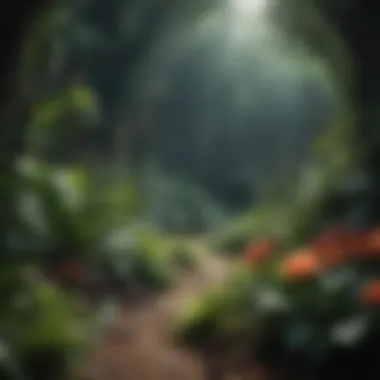
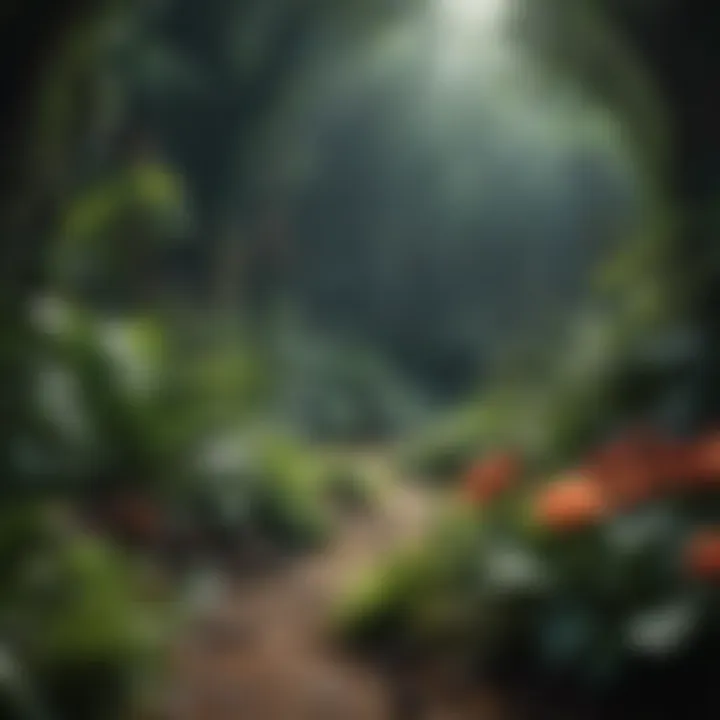
Understanding this connection enriches our comprehension of how artists cultivate their muses. It provides a framework for evaluating how compositional techniques can be seen as gardening practices, where ideas take root, grow, and ultimately contribute to a vibrant ecosystem of sound.
Symbolism of Gardening in Music
Gardening in music serves as a powerful metaphor for artistic creation. The act of planting a seed represents initiating an idea, a melody, or a harmony. Just as a seed requires care, attention, and appropriate conditions to flourish, so too does a musical idea necessitate nurturing and development. Music often draws upon references to nature and growth, reflecting the influence that these themes have on human experiences.
The gardens of our thoughts can yield a diverse range of musical fruits: from complex compositions that resemble intricate floral arrangements to simple tunes that evoke the peacefulness of a lush meadow. Each musical piece, much like a garden, requires careful planning and ongoing maintenance. As artists, musicians engage in a constant process of selection, similar to choosing which plants best complement each other in a garden environment.
"Music is to the soul what gardening is to the earth; both require patience and a vision for growth."
Furthermore, many musicians refer to their works as gardens of sound. This symbolizes the diversity and variety inherent in musical expression. There is a rich potential within each composition, much like the vast array of plants in a garden, revealing new layers and complexities with each encounter.
Cultivating Sound: Metaphors and Analogies
The metaphors drawn from gardening extend to various techniques used in music composition. For instance, the process of layering sounds in music can be likened to adding different types of plants to a garden, creating depth and harmony within a space. Musicians may use looping and sampling as organic influences, cultivating sounds akin to planting different seeds.
Analogies abound when discussing rhythm and cadence: just as different plants grow at varying rates, musical rhythms can alternate from rapid to slow, creating dynamics that reflect the natural world. Artists may also explore dissonance and harmony, representing the balance and contrast often found in gardens where different species coexist.
The cultivation of sound thus becomes an intricate dance, involving deliberate choices and spontaneous moments—much like a gardener's practice. As these elements combine, music emerges as an organic, living form, shaped by the artistic decisions made along the creative journey.
Through examining the intersection of horticulture and music, we gain profound insights into the artistic process. This exploration reveals that both fields, rich with creativity and innovation, share common principles that continuously inspire musicians and gardeners alike.
Avant-Garde Movements and Their Musical Influence
Avant-garde movements represent a significant shift in artistic expression, where traditional norms were challenged and new ideas flourished. This section explores the profound impact these movements have had on music, particularly reflecting on how they cultivated innovative approaches to sound and composition. The avant gardener embodies this spirit, blending various influences to create a fertile ground for experimental music.
Dadaism and Surrealism in Music
Dadaism emerged in the early 20th century as a response to the horrors of World War I. It was characterized by its rejection of established artistic standards. Music from this era, influenced by Dada theories, sought to disrupt conventions. For example, the works of composers like John Cage incorporated chance into composition, echoing Dada’s randomness and anti-art stance. Surrealism extended these ideas, promoting dream-like narratives and unexpected juxtapositions in sound.
Dada and surrealist music challenged listeners to engage with sound in a new way, often provoking thought and emotional responses. Notable examples include the use of found sounds and non-traditional instruments, which encouraged a break from classical forms. The emphasis on spontaneity parallels the philosophy of the avant gardener, who nurtures unconventional growth in both plants and sound.
"Dada taught us that art could be made from anything and that new meanings could arise from unexpected sources."
Futurism and Innovation
Futurism was the manifestation of a desire to celebrate technology and modernity, emphasizing speed, movement, and mechanical power. It inspired composers like Luigi Russolo, who famously constructed the "intonarumori" or noise machines. These machines produced a variety of sounds, reflecting the frenetic energy of urban life and reshaping the landscape of music. The aim of Futurism was clear: to revolutionize how music was perceived and experienced.
Innovative compositions emerged, characterized by complex rhythms and non-traditional structures. The influence of Futurism remains observable today; many contemporary musicians continue to experiment with technology, pushing sonic boundaries beyond the conventional. The spirit of the avant gardener aligns with Futurism as both seek out new forms and approaches, continuously exploring the uncharted terrains of music creation.
Notable Avant Gardener Figures in Music
The realm of music has always been fertile ground for innovation, and the concept of the avant gardener plays a pivotal role in this evolution. Notable avant gardener figures in music are essential not only for their artistic contributions but also for how they challenge and reshape the very notions of musical expression. By defying conventional boundaries, these composers and artists cultivate a diverse landscape that promotes engagement, experimentation, and growth in music.
Influential Composers and Artists
Among the most prominent avant gardener figures are composers and artists who have left an indelible mark on various music genres. Their contributions often transcend traditional forms, placing emphasis on creativity and originality. One key figure is John Cage, known for his pioneering works that incorporate chance elements into compositions. His piece 4'33", consisting of four minutes and thirty-three seconds of silence, invites listeners to reconsider the nature of sound and listening. Cage's work illustrates how the avant gardener approach can redefine artistic intent and challenge perceptions.
Another influential figure is Arnold Schoenberg, who revolutionized the concept of atonality in music. Through the development of the twelve-tone technique, Schoenberg opened up new avenues for compositional exploration. His focus on expanding the tonal palette allows for greater freedom of expression, contributing to the avant gardener's role in music.
Other notable figures include Brian Eno, whose ambient music blurred the lines between composition and environmental sound. His innovative approach to music production and collaboration has inspired countless musicians to adopt a more open-ended creative process, continuing the spirit of inventiveness in the avant gardener tradition.
Modern Avant Gardener Musicians
Modern avant gardener musicians continue to push boundaries and cultivate new forms of expression in today’s musical landscape. Artists like Bjork exemplify this by blending various genres, technologies, and cultural influences. Her work not only reflects an innovative approach but also highlights the integration of visual art and technology into music.
Similarly, Flying Lotus merges electronic, hip-hop, and jazz elements, creating a unique sound that resonates with a wide audience. His experimental techniques often involve intricate layering of textures and rhythms, demonstrating the avant gardener's ethos in his compositional style.
Amongst these contemporary figures, Thom Yorke of Radiohead stands out as well. He applies avant-garde principles in his songwriting, influencing rock music by incorporating electronic elements and non-traditional song structures. Yorke’s work reflects a deep exploration of emotional and technological themes, resonating with today's societal context.
In summary, notable avant gardener figures in music play a crucial role in enriching the musical ecosystem. Through their commitment to innovation and exploration, they inspire future generations of musicians to embrace creativity and challenge the norms of musical expression.
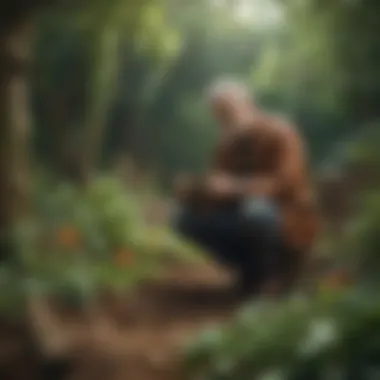
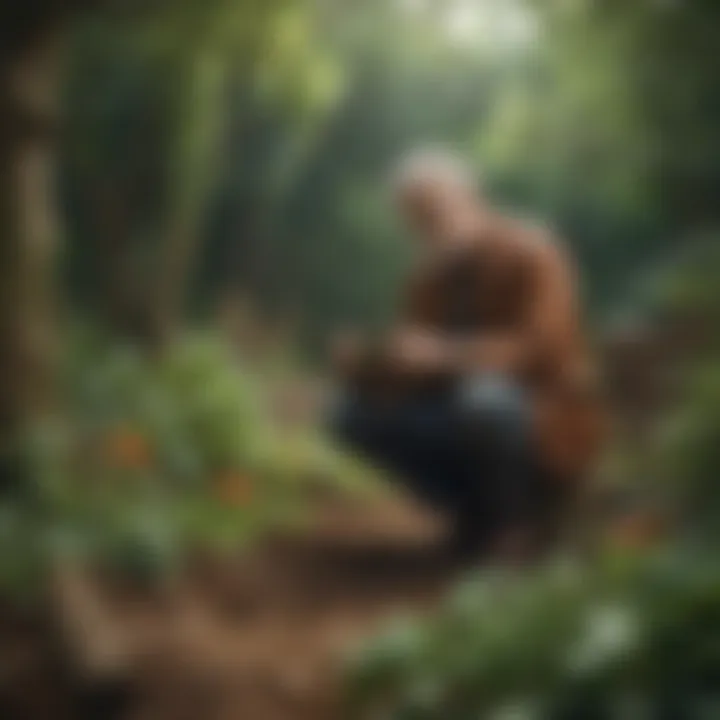
The Role of Innovation in Music Composition
The role of innovation in music composition is crucial to understanding how musicians push boundaries and create new soundscapes. It is not just a simple act of combining notes, but a meticulous process that involves inspiration, experimentation, and a willingness to break away from traditional norms. In the context of the avant gardener, this innovation resembles the act of cultivating a garden, where musicians nurture and grow their unique ideas much like a gardener tends to a variety of plants.
One of the primary elements of innovation in music is the exploration of diverse techniques and methods. Musicians today have access to numerous tools and technologies that allow them to experiment with different forms of sound production. Adventurous artists often employ unconventional instruments, electronic manipulation, or even found sounds to challenge the listener's expectations and redefine musical experiences.
Benefits of these innovative approaches include:
- Enhanced Creativity: Musicians are inspired to think outside the box. By experimenting with dissimilar genres, tools, or structures, they often unearth unique sounds that can resonate with diverse audiences.
- Richer Experiences: Listeners benefit from innovative compositions as they engage with music that strays from the predictable. This complexity can evoke deeper emotional responses, making the listening experience more worthwhile.
- Evolution of Genres: As musicians innovate, new genres often emerge. This constant evolution shapes the musical landscape and contributes to the ongoing dialogue between the artist and the audience.
Experimental Approaches
Experimental approaches in music composition signify the willingness to challenge existing frameworks. Such approaches are essential for avant gardeners who desire to cultivate new auditory environments. The avant-garde movement emphasized individual expression, which is fundamentally linked to experimentation.
- Field Recording: Many contemporary musicians utilize field recordings to incorporate natural sounds into their compositions. This approach allows music to become a narrative woven from environmental elements.
- Extended Techniques: Musicians often adopt extended techniques, where traditional instruments are played in non-traditional ways. For example, string players may use bowing techniques that produce unusual sounds, enabling a fresh perspective on familiar instruments.
- Collaborative Practices: Collaboration among different musical genres can yield unexpected results. For instance, a jazz musician may collaborate with an electronic artist to produce a piece that gracefully blends improvisation with programmed elements.
The act of experimentation is at the core of the avant gardener, urging musicians to continuously seek and explore novel avenues in their art.
Breaking Conventional Boundaries
Breaking conventional boundaries is a defining characteristic of avant-garde music composition. This aspect challenges the status quo and encourages artists to venture beyond the familiar. It is about redefining what music can be, both conceptually and structurally.
Musicians often face pressure to conform to established standards, making the choice to break boundaries both a bold and necessary one:
- Non-linear Structures: Traditional music often follows predictable patterns. In contrast, avant-garde compositions may lack a clear introduction, development, and resolution, creating a unique listening journey.
- Cross-cultural Influences: Musicians integrate styles and elements from various cultures. This blending of influences can lead to the creation of hybrid genres that resonate on multiple levels.
- Challenging Lyrics: Lyrical content can also break free from conventional themes. Artists may address relevant social issues, personal struggles, or abstract concepts. This adds layers to the music and provides new insights.
Contemporary Applications of Avant Gardening in Music
The theme of contemporary applications of avant gardening in music represents a rich terrain worth exploring. This realm showcases how innovative approaches linked to the gardener metaphor can manifest in today’s sound landscape. By examining cross-genre collaborations and technological influences, we can identify distinct characteristics that define the avant gardener’s role in modern musical expressions.
Cross-genre Collaborations
Cross-genre collaborations serve as a prime example of how the avant gardener concept thrives in our modern era. Musicians and composers today are increasingly not confined to traditional boundaries. Instead, they engage in projects that blend various genres and styles, creating unique sound experiences. This phenomenon stimulates creativity and enhances artistic expression.
The increased accessibility of different musical styles allows artists to take inspiration from diverse sources. For instance, the collaboration between Billie Eilish and Rosalia melds pop with flamenco. Such combinations challenge conventional music structures and push the boundaries of genre definitions.
Benefits of these collaborations include:
- Expanding the audience base: When genres merge, artists can attract listeners from multiple musical backgrounds.
- Fostering innovation: New ideas arise from handling differences in rhythm, melody, and instrumentation.
- Enhancing cultural dialogue: These projects create a platform for cross-cultural exchanges.
The avant gardener cultivates a soundscape rich in diversity, and cross-genre collaborations enable broader conversations between varied musical heritages.
Technological Influences
Technological advancements also play a significant role in the contemporary applications of avant gardening within music. Innovations in music production, distribution, and performance have transformed how artists create and interact with their audiences. Tools such as digital audio workstations, synthesizers, and sampling technology have expanded the creative possibilities.
Artists are now equipped with powerful software and hardware that allow for unprecedented levels of experimentation. For instance, virtual reality technology has introduced novel ways for musicians to engage with their fans through immersive experiences. Software like Ableton Live enables real-time manipulation of sounds, encouraging spontaneity—hallmarks of an avant-garde spirit.
Considerations of technology in music include:
- Accessibility: Many home studio setups now offer tools once reserved for professional studios, thus lowering barriers for emerging artists.
- Sound experimentation: With technology, artists can manipulate sounds in ways not previously possible, leading to groundbreaking compositions.
- Audience interaction: Live streaming and social media platforms allow musicians to reach global audiences, fostering connections that were once geographically limited.
In summary, the contemporary applications of avant gardening in music fully illustrate how innovators cultivate fresh ideas. By bridging genres through collaboration and leveraging technology, today’s musicians embody the avant gardener ethos, reshaping the musical landscape for future generations.
The Cultural Significance of the Avant Gardener
The cultural significance of the avant gardener extends beyond just musical innovation. It embodies a fusion of creativity and sustainability that reflects the ethos of modern society. In many ways, the avant gardener represents a response to contemporary challenges, merging the cultivation of sound with the cultivation of landscapes. This section emphasizes both the social and artistic impacts of this unique concept.
In the context of artistic expression, the avant gardener symbolizes a shift from traditional methods. Artists who embrace this role seek to break away from established norms, utilizing their platforms to address issues that resonate with their identities. This evolution in artistic expression provides a voice for underrepresented narratives. By connecting personal experiences to broader themes, avant gardeners encapsulate cultural stories within their music.
Artistic Expression and Identity
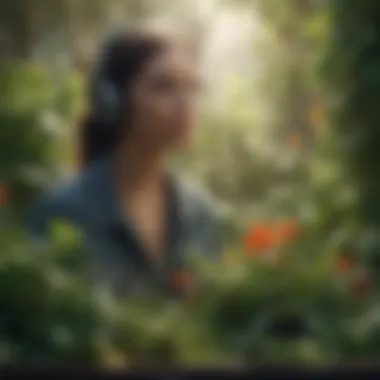
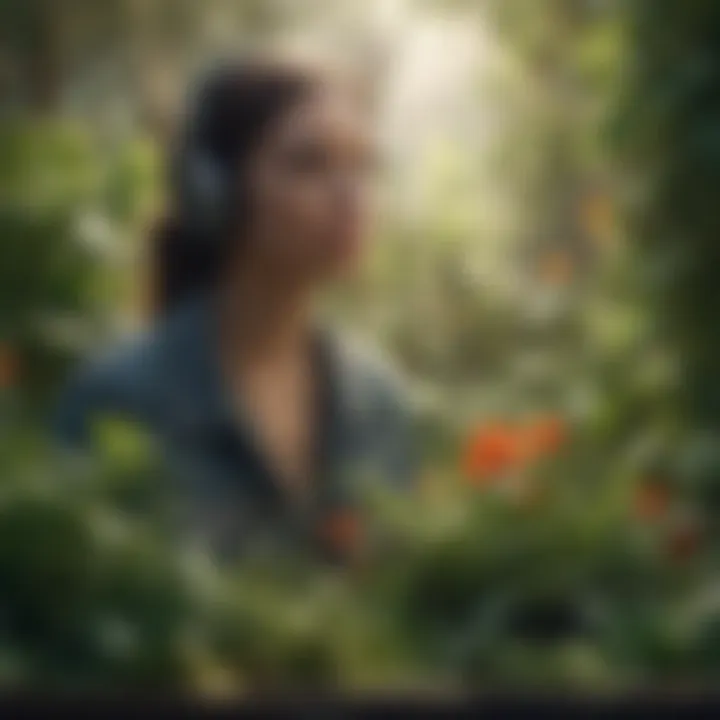
Artistic expression is an essential component of the avant gardener's significance. As musicians and composers draw inspiration from their horticultural practices, they reflect their cultural identities through their works. This relationship between gardening and music allows artists to articulate emotions, struggles, and social commentary. The result is a rich tapestry of sounds that resonates on multiple levels.
For example, consider Mitski, who intertwines her Japanese heritage with contemporary themes in her music. Her soundscape acts as a garden of emotions, where each piece blooms with authenticity. In this way, the avant gardener becomes a cultivator of identity, nurturing sounds that challenge listeners to reflect on their own experiences.
Influence on Popular Music Trends
The influence of the avant gardener on popular music trends is profound. As avant-garde movements inspire new genres, they gradually reshape mainstream music. Collaborations between diverse artists often lead to groundbreaking sounds that challenge listeners' expectations. These trends can be observed in various musical landscapes, from hip-hop to electronic music.
For instance, the fusion of electronic beats with organic sounds creates a unique listening experience that resonates with audiences. Artists like Bon Iver utilize environmental sounds in their work, mirroring the avant gardener's philosophy of amalgamating different elements to create something fresh and innovative.
Moreover, the avant gardener's principles encourage sustainable practices in music production. As artists become aware of their environmental impact, many are adopting methods that minimize waste and use renewable resources. This shift not only elevates their artistic integrity but also appeals to a growing audience that values sustainability.
"The avant gardener is not just a creator; they are a visionary who nurtures both art and the environment."
Critique of Avant Gardener Practices
The concept of the avant gardener carries with it significant implications for both music and horticulture. It invites examination of how these avant-garde practices influence broader artistic expression. This critique is essential as it highlights the potential pitfalls and successes in these endeavors. Understanding these dynamics helps clarify why so many artists gravitate toward this unique intersection.
Challenges and Controversies
Avant gardeners often face challenges when introducing their innovative ideas to the public. One primary challenge is the resistance from traditionalists who favor established practices. Some argue that avant-garde approaches dilute the essence of music or gardening. Additionally, the very nature of experimentation can lead to unpredictability. This unpredictability may alienate audiences or listeners who expect structured forms and familiar sounds.
Moreover, there are controversies surrounding authenticity. Many aficionados question whether the avant gardener's innovations are genuinely creative or merely a repackaging of existing concepts. The idea of cultural appropriation can also surface, as artists may borrow elements from various traditions without adequate acknowledgment of their origins. This can ignite heated discussions about originality versus imitation within modern music.
In summary, while avant gardening offers fresh perspectives, it is not without conflicts. The challenge is to find a balance that respects tradition while fostering innovation.
Reception by Mainstream Audiences
The reception of avant gardener practices by mainstream audiences often hinges on familiarity. Many listeners tend to gravitate towards the conventional. They appreciate music that follows established patterns and structures. In this context, avant gardening may seem foreign or inaccessible, leading to mixed reactions.
Some mainstream audiences embrace avant-garde elements when they see familiar influences blended with innovative ideas. Artists like Björk, for instance, successfully infuse avant-garde music with pop elements, creating a unique listening experience that appeals to a broader range of listeners. In contrast, entirely experimental works can derail engagement from traditional music fans.
The avant gardener often navigates a delicate balance, striving to capture the attention of both purists and experimentalists.
The discursive landscape surrounding avant gardening in music suggests a complex relationship with mainstream culture. While some artists push boundaries, others face dismissal. Nonetheless, as music continues to evolve, the influence of avant gardening may gradually carve out a niche within mainstream tastes.
Future Directions of Avant Gardening in Music
The future directions of avant gardening in music represent a crucial area for exploration and innovation. As artists continue to seek unique expressions, the integration of horticultural concepts into modern musical practices could bring about transformative change in genres and cultural perception. This growth points to the capacity to cultivate a cross-disciplinary dialogue, wherein artists can draw inspiration from nature as a nurturing force for creativity.
Potential for New Genres
The potential for new music genres rooted in the avant gardener concept is a topic of keen interest. Musicians have always experimented by blending styles, but upcoming trends could lead to the creation of entirely new genres.
- Hybridization of Genres: As artists blend various styles, there seems to be an inclination toward creating hybrids that reflect both ecological concerns and musical innovation. This could lead to sub-genres that emphasize sustainability as a core element.
- Nature-Inspired Soundscapes: With advancements in technology, artists can now replicate sounds found in nature. This can encourage the development of genres that focus on environmental themes, promoting awareness through sound.
- Community and Collaboration: The essence of the avant gardener concept promotes community. Collaborations spawn unique sounds and engage a broader audience. More artists might work together in innovative ways, mirroring gardening practices where collective efforts yield better results.
The emergence of such new genres would not only enrich the musical landscape but also engage listeners worldwide in conversations around growth and creativity.
Sustainability in Music Practices
Sustainability is increasingly becoming a priority in various sectors, including music. The relevance of sustainable practices stems from the environmental challenges facing our planet. Music can play a pivotal role in promoting ecological stewardship.
- Eco-friendly Production: Musicians are recognizing the importance of reducing their carbon footprint. This includes utilizing sustainable resources for recording and touring, thus marrying the ethos of the avant gardener with practical action.
- Messages and Themes: Many contemporary artists are infusing their works with themes of sustainability. Lyrics mentioning nature and environmental issues can resonate strongly with audiences, raising awareness and promoting action.
- Use of Sustainable Materials: The choice of instruments and materials can also reflect sustainability. Artists willing to use eco-conscious materials in their instruments foster a culture of responsibility and awareness in the industry.
Incorporating sustainability into music practices not only honors the avant gardener but also fosters a cultural shift that values our planet while continuing to drive musical innovation.
"The avant gardener is not just creating music; they are cultivating a movement towards a more sustainable and innovative future."
The exploration of future directions in avant gardening in music reveals a landscape rich with opportunity. Whether through new genres or sustainability practices, the intersection of these fields is poised to redefine the creative process in profound ways.
Ending
The exploration of the avant gardener in modern music reveals significant insights into the intersection of creativity and innovation. Understanding this concept is crucial for appreciating how various musical forms are influenced by avant-garde practices. As music continues to evolve, the role of innovative figures who challenge traditional norms becomes increasingly vital.
- Integration of Ideas: The avant gardener exemplifies a unique integration of gardening techniques and musical composition. This highlights the importance of nurturing both sound and ideas, allowing for new genres to flourish.
- Cultural Relevance: The avant gardener's influence in shaping contemporary artistic expression remains evident. Artists today draw inspiration from historical movements, contributing to the ongoing evolution of music.
- Innovative Practices: As the music industry embraces experimental approaches, the avant gardener becomes a symbol of pushing boundaries. This fosters a culture of exploration, encouraging musicians to cultivate distinct sounds and styles.
- Future Possibilities: The concept paves the way for potential new genres and enhances discussions around sustainability in music practices. By valuing creative processes akin to the growth of a garden, artists can contribute to a richer musical landscape.
In summary, recognizing the avant gardener's role in music is essential for understanding current trends and anticipating future innovations. This awareness not only enriches listening experiences but can also inspire future musicians. The synthesis of gardening and music reaffirms that creativity thrives in every harmonious note, much like in a well-tended garden.







